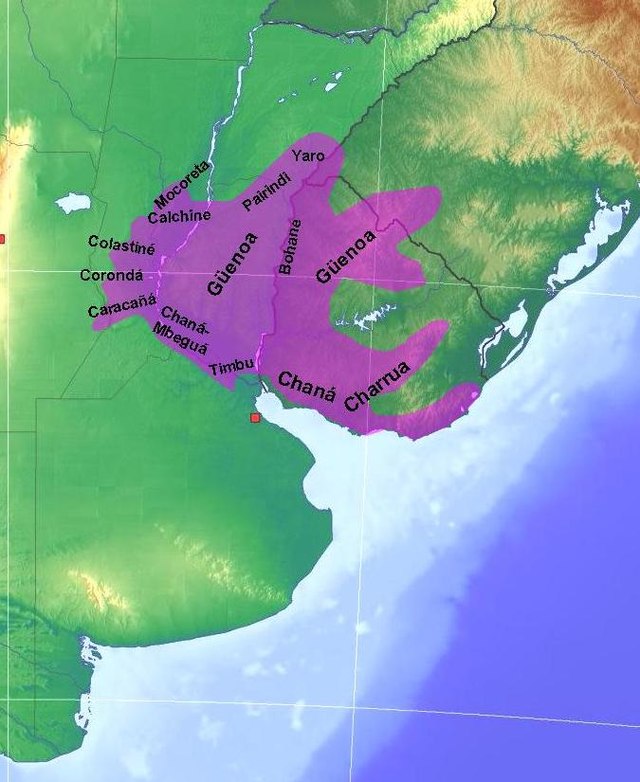Top Qs
Timeline
Chat
Perspective
Charruan languages
Language family of South America From Wikipedia, the free encyclopedia
Remove ads
The Charruan languages are a language family once spoken in Uruguay and the Argentine province of Entre Ríos. In 2005, a semi-speaker of the Chaná language, Blas Wilfredo Omar Jaime, was found in Entre Ríos Province, Argentina.[2]
Remove ads
Internal coherence
Charruan may actually consist of two or three unrelated families according to Nikulin (2019).[3] Nikulin notes that many of the following languages share very few basic vocabulary items with each other.
- Chaná as spoken by Blas Wilfredo Omar Jaime
- Chaná of Larrañaga (1923)[4]
- Charrúa of Vilardebó (1842)
- Güenoa from a short 18th-century catechesis quoted by Lorenzo Hervás y Panduro[5]
Languages
Summarize
Perspective
Four languages are considered to definitively belong to the Charruan language family, basically Chañá (Lanték), Nbeuá, Charrúa and Guenoa. Nbeuá is thought to be a dialect of Chaná. A fourth language, Balomar, is claimed to exist by Loukotka (1968), but there is no data on it.[1]
A number of unattested languages are also presumed to belong to the Charruan family:[1]
- Bohane – spoken near Maldonado, or Salto, in Uruguay
- Calchine – spoken in Santa Fe Province, Argentina, along the Salado River
- Caracañá – spoken along the Caracañá River, Santa Fe
- Chaná-Mbegua or Begua – spoken on the Paraná River between Crespo and Victoria
- Colastiné – spoken in Santa Fe Province near Colastiné
- Corondá – spoken in Coronda, Santa Fe Province
- Guaiquiaré – spoken in Entre Ríos on the Arroyo Guaiquiraré
- Mocoreta or Macurendá or Mocolete – spoken along the Mocoretá River in Entre Ríos Province
- Pairindi – spoken in Entre Ríos from Corrientes to the Feliciano River
- Timbu – spoken in Gaboto, Santa Fe Province
- Yaro – spoken in Uruguay between the Río Negro and the San Salvador River
Remove ads
Genetic relations
Jorge Suárez includes Charruan with Guaicuruan in a hypothetical Waikuru-Charrúa stock. Morris Swadesh includes Charruan along with Guaicuruan, Matacoan, and Mascoyan within his Macro-Mapuche stock. Both proposals appear to be obsolete.
Vocabulary comparison
Summarize
Perspective
The Charruan languages are poorly attested. However, sufficient vocabulary has been gathered for the languages to be compared:[1][6]
Lexical comparison from Nikulin (2019):[3]
Remove ads
References
Wikiwand - on
Seamless Wikipedia browsing. On steroids.
Remove ads


